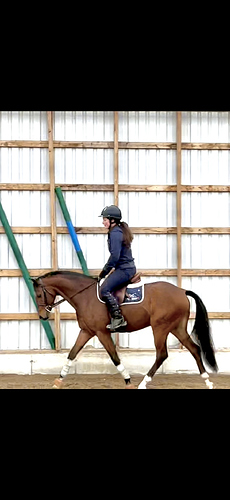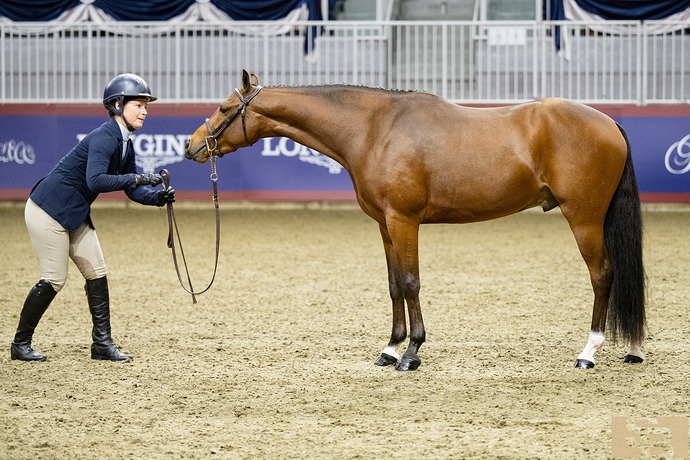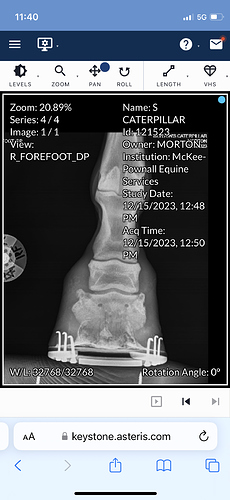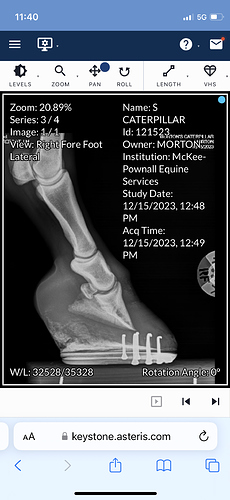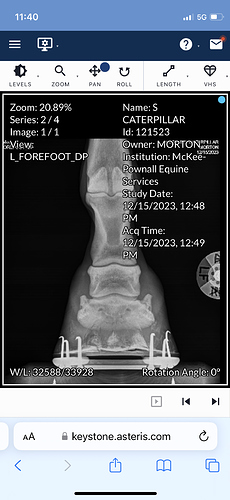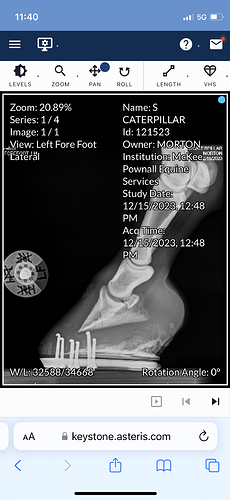First of all I do want to say I’m working with my vet and farrier, but would love some others input and opinions if they have encountered anything similar to my situation with my 3 year old (will be 4 years old this April). I’m waiting to hear back from my vet about the bloodwork, as it just came in, so I know she will have some great ideas/input and will help me and my pony out for sure. I trust her 100%.
Back when this guy was a 2 year old, he had his Rhino/Flu only at the end of October (was not overweight and not on pasture) and he foundered the day after (now at the time I thought he pulled something in his shoulder in turnout, I did not think of founder until this spring when he had his shots again). He was sound 3 weeks later as I did show him at the Royal (a large indoor show in Toronto), but it was touch and go as I wasn’t sure what was wrong, thinking he just pulled a muscle as he was sore, but not THAT sore.
When he has all of his shots in May 2023, he then foundered the next day (he was also not overweight, not on grass and is not a huge eater - gets very little low NSC grain -all of my ponies do, just in case). I called the vet right away and asked if it could be possible he foundered from his shots, explained my thoughts (as then I recalled his soreness back in October and put 2 and 2 together). She said its for sure possible, to treat with flunixin, and once he’s sound, to work him (hard to do when he’s 3 as I just like to lightly ride for 20 mins maybe 2-3 times a week, but of course would do the best I can do). I did not have extra $ at the time to do xrays and bloodwork, but treated him like a foundered pony (soaked hay, no pasture, even less grain with less than 10% NSC- about 1 cup a day, added natural vitamin E, Madbarn W3 oil, and chromium) and spoke with my farrier who trimmed him the best he could without xrays.
He was fairly sound 6 weeks after and we put shoes and then pads on him, and have not had any issues since (*knock on wood). I finally had some extra $ and had some xrays (mid Dec) and bloodwork sent out. Xrays were instant and showed rotation. The xrays were also sent to my farrier and vet called him as well to make a plan for shoeing. He has decreased some of his heel (as per the vet) and added snow pads as well as some liquid padding (not sure what its called but its white and blue and he pours it in the foot, puts the pad on and has the pony put the foot down so it squishes out.
It then hardens up, but is still softish).
The pony is now boarded at a indoor for the winter where I ride him 4 x week for about 30-40 mins. He continues to be sound and is moving really well. Same grains and supplements daily.
Now when the vet pulled his blood (mid Dec 2023), she suspected IR but he didn’t really have any of the symptoms to me so I’m stumped. The vet sort of agreed with me but wanted to do the blood work anyway to rule things out. I did not fast him at all when she pulled blood - he was actually eating hay when I brought him in, so I’m not sure if that would skew any of the numbers (I will mention this to the vet when she calls me as well to discuss the bloodwork). He was then lightly sedated (with flunixin as she was a bit worried he may founder) and had his teeth done since I was about to take him to an indoor to continue his training (moved him Jan 2024).
When she pulled blood she asked me if he drank a lot of water/urinated a lot (he does not - inside he drinks about 5-10L water - hard to tell what he drinks outside but I have a 80L bucket and 4 ponies drink a total of about 40L/day, normal amount of pee in his stall for a 14h pony, which is very little- for sure less than my 14.2h guys), asked if he was tired or lethargic when I rode him (he’s quite peppy, not crazy forward, but not lazy or tired at all), she noticed he was not overweight or had any fat pockets on him. The only odd thing I did mention is that he has a bad case of scratches that I have been dealing with for the past year. She mentioned IR horses tend to have skin issues and with treatment, they clear up. But other than that, no other symptoms that I can think of.
If you have read my long saga, I appreciate it! I will attach his blookwork, xrays and current pics of him so you can see his weight (pics from mid Nov and then under saddle last week).
Going forward his shots will be intranasal, with flunixin started 2 days before his vaccines and up until 1 day afterwards (as per the vet).
[Untitled]_2024011613104793.pdf (201.6 KB)

